1 Gallon Of Almond Milk
I n nutrient and potable, we all want to do the right thing. We want to store and consume sustainably. Merely, sometimes, it is easier said than done. Our willingness to jump on the latest eco-trends and unquestioningly accept reassuring labelling tin lead to unintended consequences. If we are serious virtually eating greenish, we demand to read beyond the headlines and call up rigorously about how nosotros employ upstanding advice in our own lives. Past style of inspiration, hither are some of the means we get information technology wrong on ingredients, storage and recycling – and a few surprisingly like shooting fish in a barrel solutions.
Is almond milk really the nuts?

Influenced by make clean eating and agri-exposés such every bit Cowspiracy (whichpointed to methane emissions from cattle as crucial in global warming), many are ditching cows' milk in favour of non-dairy alternatives, which, co-ordinate to Euromonitor, now make-up 12% of global milk sales.
That sounds positive. Pre-shipping, the carbon created past a litre of semi-skimmed (1.67kg) is far higher than that of almond milk (360g). "But what people don't know is the environmental impairment almond plantations are doing in California, and the h2o cost. It takes a bonkers 1,611 US gallons (vi,098 litres) to produce one litre of almond milk," says the Sustainable Restaurant Clan's Pete Hemingway.
Over 80% of the globe'due south almonds are grown in California, which has been in severe drought for most of this decade. Hemingway describes a situation in which farmers are ripping upward relatively biodiverse citrus groves to feed rocketing demand for almonds, creating a monoculture fed past increasingly deep h2o wells that threaten statewide subsidence problems. That leaves rather a bad taste in the rima oris.
Solution: of the dairy alternatives, oat milk is the most sustainable option, according to Hemingway.
Thank cod! The fish we can eat again
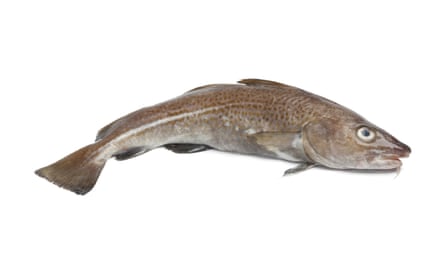
When campaigning organisations hit the panic button, the message – in this case: cod is endangered, don't eat it – tin can stick, long afterward information technology is relevant. Fish stocks are dynamic, points out the Marine Stewardship Council'southward George Clark. Communication changes and responsible consumers need to stay abreast of that: "There'due south a lot of defoliation about cod, but there are plentiful supplies of MSC-certified cod in the northward-east Atlantic. About 91% of Norway's grab is certified."
Solution: become (certified) cod back on your card.
Bioplastic is not fantastic
Many street food vendors take switched to bioplastic – which sounds like an ethical choice. But, while it may make street food feel virtuous, Friends of the Earth and Greenpeace challenge its green rep. It is resources intensive and less than 40% of bioplastic is designed to be biodegradable. In many ways, information technology is just another polluting plastic.
Solution: want to swallow green on the go? Carry cutlery in your handbag.
Cling to your clingfilm
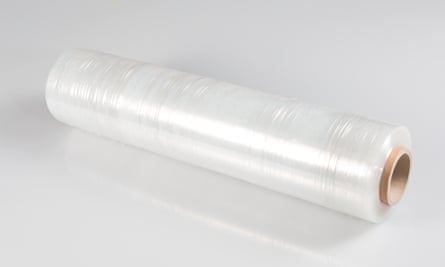
Post-Blue Planet 2, professional kitchens are all #chefsagainstplastic. London'due south Spring eating house, for example, was using 3,600km of clingfilm a year. Now it uses beeswax wrapping. But harassed home cooks need to take a more nuanced view. Within reason (wrapping half a lime is daft), not wasting food should exist your environmental priority. "Clingfilm can play an of import role in that," says Hemingway.
Solution: buy more Tupperware.
Put equality at the heart of ecology
The rush to ban plastic straws and the resulting outcry from disability campaigners (who, for various medical and practical reasons demand plastic straws), crystallised how the social impact of green initiatives needs greater consideration. The adjacent battleground, predicts Sue Bott, deputy master executive of Disability Rights United kingdom of great britain and northern ireland, will be food and drink venues banning bottled water and replacing information technology with water fountains: "Reducing plastic utilise is commendable, but our lives become more restrictive if changes are introduced overnight."
Solution: let consumers choose.
Don't bottle information technology
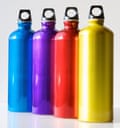
According to Crystal Market Enquiry, the US reusable water bottle market place will be worth $9.62bn past 2023, upwardly $3bn in a decade. A recent Keep Britain Tidy/Brita survey institute that 55% of united states of america own a refillable bottle, only only 36% of united states of america deport it regularly. Ideally, purchase 1 made from recycled materials (eg Eco-Bottles), and apply it.
Solution: keys, phone, purse/wallet, h2o canteen – arrive part of your daily routine
Local ≠ sustainable
With fish, terms such as "local", "day-boat" and "line-caught" are now seen by many consumers as a guarantee of sustainability. They are non, says Clark, who points to overfishing of sea bass as an example of what happens when line-fishing is not rigorously scrutinised by a third party, such as MSC: "Sustainability has to comprehend fish stocks, their management and environmental impact."
Solution: stick to fish objectively certified as sustainable
Take a clear view on plastic bottles
Manufacturers can characterization any bottle that can feasibly be recycled equally recyclable. In reality, says Friends of the Earth'south Emma Priestland, weirdly designed or coloured bottles are likely to be sifted out at recycling sites and will stop upwards in landfill: "Robinson's Fruit Shoot bottles are made of easily recycled Pet, merely because [ane version] is solid purple, it'due south difficult to recycle. If separated, opaque colours tin can be recycled by chemical recycling, but that increases the price, effort and energy required," she says. The European Pet Bottle Platform, which advises the bottling industry on blueprint, recommends the apply of clear Pet if possible.
"All of our Pet plastic packaging, including Fruit Shoot, is fully recyclable in the UK recycling system," says Robinson's parent company, Britvic, a founding signatory of the new Britain Plastics Pact. It adds: "We moved to a more translucent [Fruit Shoot] canteen in February."
Solution: keep your use of outlandishly designed bottles to a minimum.
The breakup on compostable packaging
Naively, you might call back that the compostable-plastic takeaway tub yous ate your lunch from is hands compostable and that, if y'all dropped information technology into a nutrient waste bin, in a few months some corking gardener will be handful it on their allotment. That is highly unlikely. These plant-based, PLA-plastic products need to be industrially composted in specific units that are and so scarce in Britain, most compostable packaging is burned or goes to landfill.
In fact, put that compostable salad tub in a food waste material bin and you lot actually create a trouble. Food waste is composted by anaerobic digestion to produce biogas and fertiliser, just, first, whatsoever packaging has to be removed. "Compostable products have no gas value," says a spokesperson for waste product recycler ReFood. "Drivers bank check customers' bins when they collect. If there is a lot of packaging, then they won't exist able to have the waste, only this doesn't happen very frequently."
In its initial product, compostable packaging is more eco-friendly than traditional plastic packaging, but, at the moment, information technology is no silver bullet.
Solution: at lunch, rather than a takeaway from the works canteen or a local caf east, sit down in and eat off a plate using metal cutlery. It is far greener. "Until the waste matter infrastructure is in place, telling people packaging is 100% compostable is, at best, problematic and, at worst, greenwash," says the Carbon Trust's Jamie Plotnek.
Switch to sustainable tofu

In S America, soy farming (mostly for animal feed), is driving deforestation and the destruction of Brazil's Cerrado grasslands. "Both release huge amounts of carbon dioxide and are a biodiversity disaster," says Dr John Kazer, footprint certification manager at the Carbon Trust. Usually 90% less, tofu originating from deforested Brazilian pastures has a carbon footprint twice that of craven.
Solution: choose tofu brands (eg Taifun) that source super depression-carbon European or U.s.a. soy.
Ane bottled water you can drink guilt-free
Sales of bottled I Water were downwards 30,000 in the first half of this yr at the University of Manchester. Fantastic, you may recollect. But One Water is no ordinary bottled water: the company is carbon neutral and its profits fund clean-water projects in the developing world (£17.4m then far). As for the plastic waste material, there is a robust market in recycled Pet bottles. Where those bottles are segregated in bins from glass, newspaper and other waste, as they are at the university, yous tin can be confident they will be recycled.
Solution: do your due diligence before swerving a product. "We fully support One Water," says Alexander Clark, an environmental co ordinator at the university. One H2o founder Duncan Goose says twelvemonth-on-year growth continues just admits: "Concern over single-use plastics is having an touch on our manufacture."
Sometimes the like shooting fish in a barrel choice is the correct one
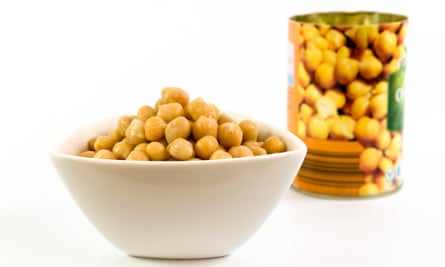
Cooking in industrial nutrient manufacturing is more than efficient than cooking at home, which makes using pre-cooked rice or tinned chickpeas over dried an energy saver. (Don't worry about the can: there is healthy demand for recycled steel.) Think nearly using a microwave, too, advises Kazer: "For smaller portions for 1 or two, compared to the hob, the energy use is a lot lower."
Solution: think about (packaging bug notwithstanding) how processed, preserved and pre-cooked food can help you reduce your food waste and energy use.
A bag actually is for life

In terms of combatting immediate ecology pollution, the 5p plastic bag accuse has been a huge success. United kingdom at present uses half-dozen.5bn fewer bags annually. Just a Danish authorities study worries some experts. "There's a fear people are not reusing heavier bags enough," says Hemingway, "to the extent the volume of bag-plastic in circulation could really be increasing." As we all accumulate bags, could this be creating an eco-anomaly?
Solution: you need to employ your handbag-for-life eight times before its carbon footprint is lower than an ordinary carrier purse. An organic cotton wool tote must be used 149 times to be in credit. Proceed them handy. Use them ofttimes.
Eat New Zealand lamb
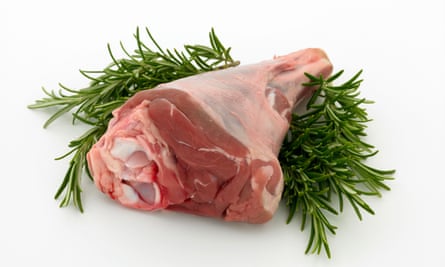
Imported New Zealand lamb has a lower carbon footprint than British lamb, concluded a 2009 report for Defra. Kiwi lamb is reared at such a low intensity that, fifty-fifty after shipping, it uses less free energy. Of course, in that location are other issues effectually sustainability that hateful you may even so want to back up British sheep farmers, only that starkly illustrates how "food miles" are no measure of a production'southward green credentials, and that at that place are no easy answers to global warming.
Solution: if you lot want to regularly slam in the lamb, await downwardly under.
1 Gallon Of Almond Milk,
Source: https://www.theguardian.com/food/2018/sep/05/ditch-the-almond-milk-why-everything-you-know-about-sustainable-eating-is-probably-wrong
Posted by: hughesbegadd.blogspot.com


0 Response to "1 Gallon Of Almond Milk"
Post a Comment